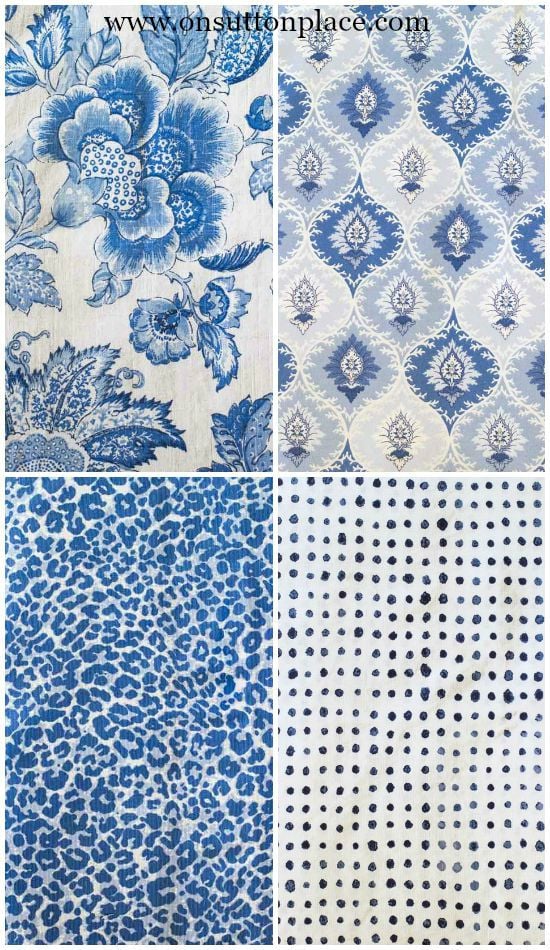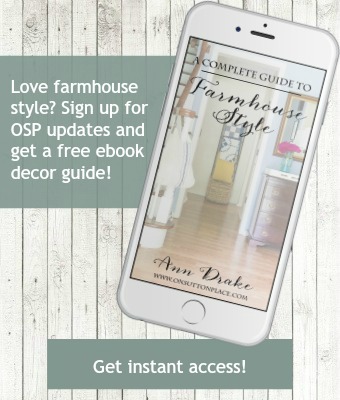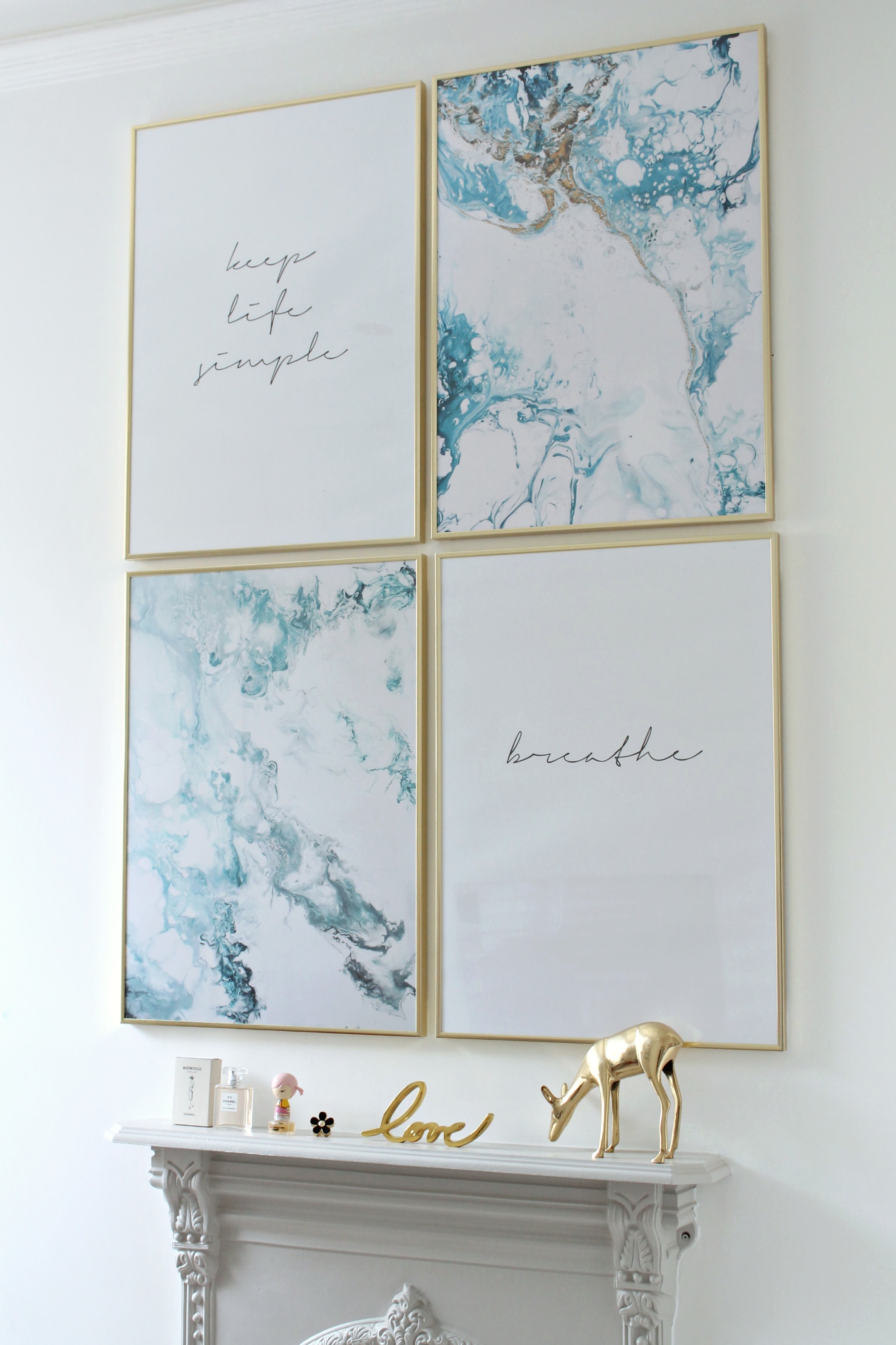If you have followed my blog for very long, you know I am a lover of fabric. I sometimes buy it without even knowing where it will end up. Mixing and matching fabric patterns may seem daunting but if you follow just a few rules, you can get the look you see in magazines at a fraction of the cost…and even if you don’t sew. My philosophy, and it’s not shared by some designers, is to use the same colors in all the main rooms of your home. Not only is it easier, but it allows you to move your soft furnishings from room to room for a completely different look. It literally expands your decor and the possibilities are endless. For example, instead of investing in a rug for one room, you will be buying a rug that you could possibly use in every main room of your home. In my case, I have the same colors in my entry, living room, dining room and kitchen. I don’t have an open concept home but by using the same colors throughout, there is flow from room to room. These 5 tips for mixing fabric patterns will work for any space.
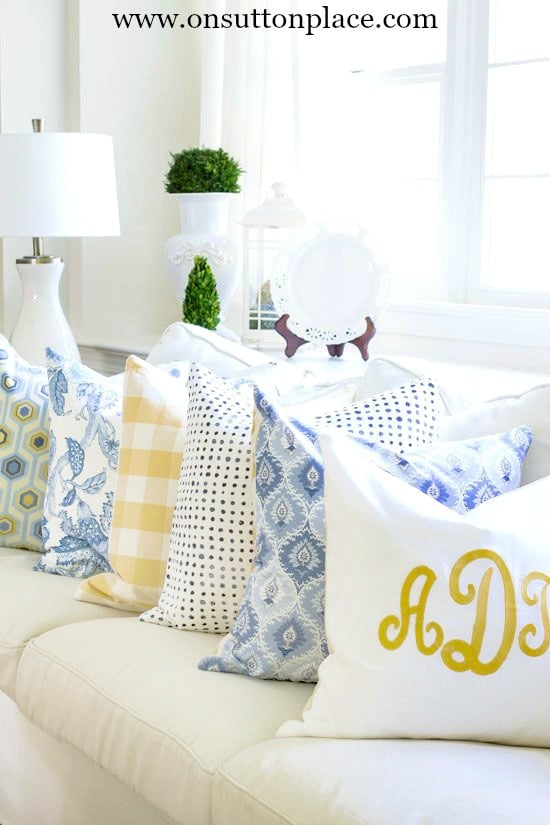
5 Tips for Mixing Fabric Patterns
1. PICK TWO COLORS AND A NEUTRAL.
Start with two colors that work in your space. Think about this for a while, decide and then stick to your decision. Believe me, I know how tempting it is to throw in another color…and you could but not when you are just getting started. It helps for these colors to be on your biggest pieces, like sofas and rugs. In my case my two colors are blue and yellow…and my neutral is ivory. Whites and ivories make great neutrals but so do grays and blacks.

2. PICK AT LEAST THREE DIFFERENT PATTERNS.
This is where your own style will come in so just choose what you love. The only rule is to stick with the two colors you chose in step 1. Some examples of patterns are florals, stripes, plaid, geometric, checks, toile, chevron, animal print.
Here are the yellow patterns I use in my main living spaces.

Here are the blue patterns.
(Fabrics no longer available.)
3. PICK AT LEAST ONE FABRIC THAT HAS YOUR TWO COLORS AND YOUR NEUTRAL.
This fabric will be what makes all the other patterns work together. Use it wherever you can along with the other patterns that you have chosen. Here are two fabrics I use that have both blue and yellow.
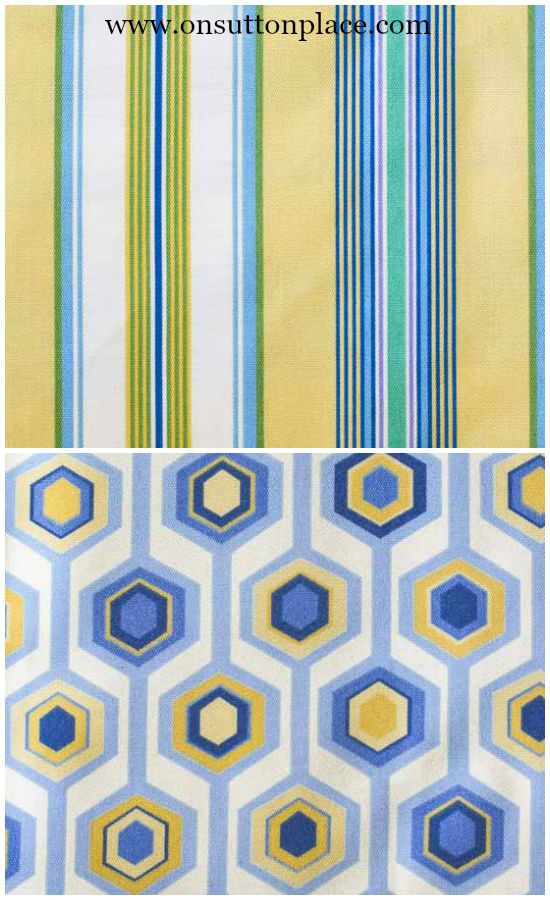 (Fabrics no longer available.)
(Fabrics no longer available.)
4. VARY THE SCALE OF YOUR PATTERNS.
Your patterns should be different sizes. For example if you have a very wide stripe, use a smaller floral pattern. If you are using a large buffalo check, use a smaller stripe such as ticking. Don’t use all stripes…or all florals.
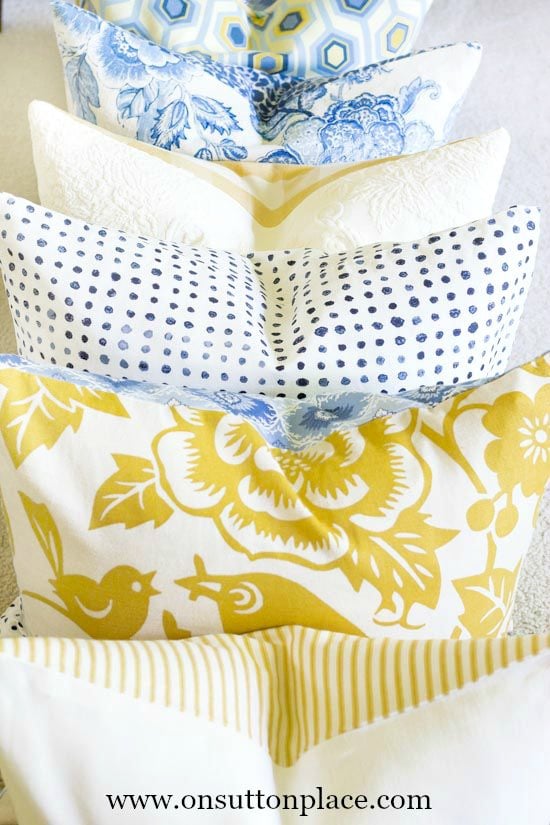
5. DON’T BE AFRAID TO BREAK A RULE!
Try to mix it up a little without over-thinking it. At the end of the day, if you fall in love with three large scale patterns, and they follow the color rule, chances are they will work just fine. I honestly pay more attention to color than scale. If I fall in love with a pattern, I tend to use it whether it follows all the rules or not. The one rule I don’t break is keeping with my two main colors, with one exception. I do add seasonal colors. In the Fall I bring in browns and oranges…and at Christmas I add reds and greens.

Christmas Pillow Covers available in my Redbubble Shop.
*Some links lead to websites where I am an affiliate. Click HERE for my disclosure statement.
My favorite places to buy fabric:
Fabric.com | Joann.com | Onlinefabricstore.net | Hobby Lobby
If you don’t sew, Etsy is an excellent place to buy pillow covers that are reasonably priced. Here are my favorite shops:
Lily Pillow | Chloe & Olive | Dekowe | Reed Feather Straw | Delicious Pillows
5 Tips for Mixing Fabric Patterns Bonus: Throws and rugs are important. Not only do they add layers but they add texture as well. Stick with your colors when purchasing these items and you will be able to freely move them from room to room.
Are you a member of the OSP family?
Click the image to learn more!
Today is DIY Tips and Tricks day so here is some more inspiration for you. These girls are absolutely the best so if you have an extra minute, please stop by their blogs. Thank you and see you soon!
Article source: http://www.onsuttonplace.com/2015/08/5-tips-for-mixing-fabric-patterns/
